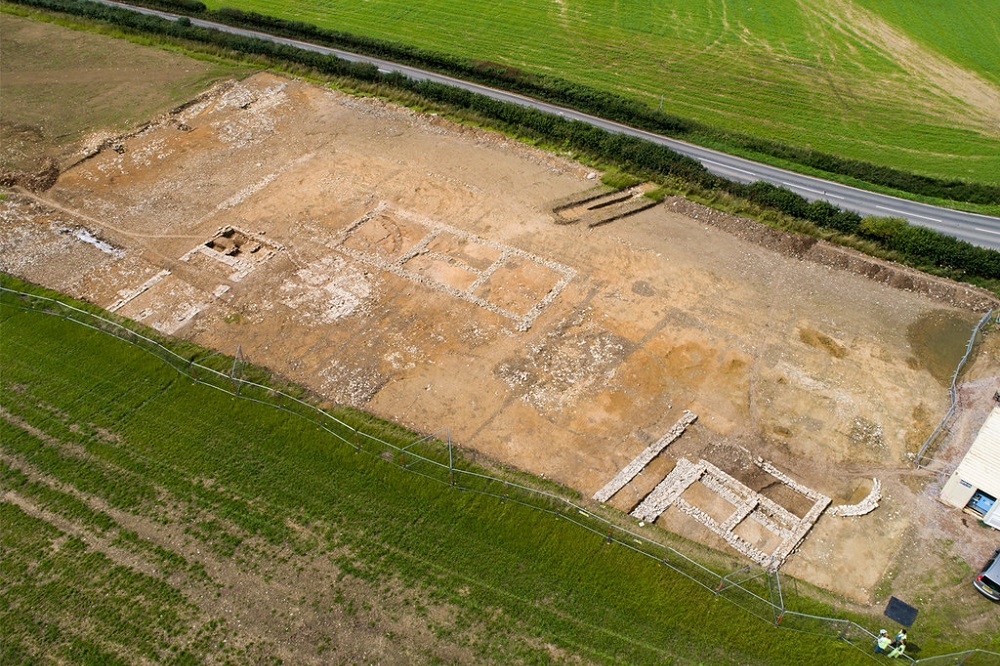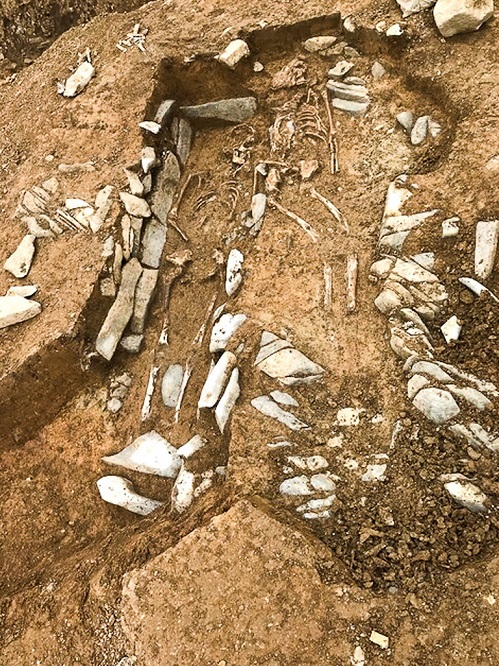Roman and medieval remains found buried by new road near Barry

Alex Seabrook, local democracy reporter
Archaeologists have found significant Roman and medieval remains and artefacts buried by a recently built road near Barry.
The finds include a Roman mercenary buried with his sword, Iron Age farming tools, ancient burial sites and the remnants of round houses.
Rubicon Heritage Services, an archaeology firm hired by Vale of Glamorgan council, has published a new e-book and interactive story map detailing their findings.
The council hired the firm while building the new Five Mile Lane A4226, which runs from Weycock Cross in Barry to the A48 at Sycamore Cross.

Emma Reed, head of neighbourhood services and transport at the council, said: “It’s great to learn that the archaeological study at Five Mile Lane has uncovered such a detailed history of the area. The scheme has uncovered fascinating and at times surprising remains, that help us to understand the shaping of the agricultural landscape that we see today.”
After the archaeologists finish analysing the remains, their detailed academic findings should be published by the end of the year.
Excavation work was carried out between 2017 and 2019, with help from the National Museum of Wales, Cardiff University, Cadw and the Glamorgan-Gwent Archaeological Trust.
The finds will later be taken to the National Museum of Wales.
More details of the remains can be found on the council’s website, including a link to the interactive story map.
Mark Collard, director of Red River Archaeology Group, which includes Rubicon Heritage Services, said: “It was a privilege for our team to have delivered a project which added so many new discoveries about the archaeology and history of the Vale of Glamorgan.
“We’re very pleased to be able now to share the results in such an accessible format with the communities of the area.”
Support our Nation today
For the price of a cup of coffee a month you can help us create an independent, not-for-profit, national news service for the people of Wales, by the people of Wales.





The old, ‘Romano British ‘, tosh yet again. So the French during the 2nd WW were Germano French and the Saxon’s following 1066 were Normarno Saxon? Oh I forgot, the ancient Briton’s couldn’t place one stone on top of another and carry on in that fashion building upwards and they certainly didn’t know how to construct a corner at 90 degrees . We are continually told the Romans founded London, ignoring the pre Roman coins and metalworking furnaces, walls and bridge foundations discovered there that pre date the Romans arrival by millennia. We are told that the Romans started gold… Read more »
Sp try archaeology.
Cachy tarw.
‘Roman’ indicates a type of society, not the ethnic background of the person who created any given artifact. In the ‘mercenary’s’ case, the term is used universally to indicate the type of arms, armour and other accoutrements found with a body. ‘British’ would indicate a completely different set of equipment. The same is true of the ‘Roman’ designation applied to architectural remains. In neither case is the designation used to imply some racial superiority. It’s strictly temporal or material. “Native British but in the fourth century north west European Roman style” is just unnecessary, particularly when, after three centuries of… Read more »